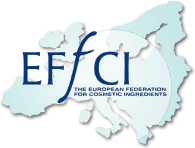Skin cells and oxygen: Hypoxia inducible factor signaling and the hypoxia response in the skin
Animals need oxygen for the conversion of food into useful energy, and it has been understood for centuries that oxygen is therefore fundamentally important for survival. However, how cells adapt to changes in oxygen has long been unknown.
Due to the Nobel prize in physiology or medicine in 2019, which was awarded jointly to William G. Kaelin Jr, Sir Peter J. Ratcliffe and Gregg L. Semenza “for their discoveries of how cells sense and adapt to oxygen availability”, the hypoxia inducible factors (HIFs) have become well-known among scientists of various fields. This family of proteins are the key transcription factors, which help a cell or a whole organism to adapt to conditions of low oxygen (hypoxia). Hypoxia can occur physiologically during development or in certain organs such as the kidney or gut where it regulates distinct cellular processes, but also during diseases such as a heart attack or stroke, where the blood and oxygen supply to the heart or brain is impaired. The activity of the HIF proteins themselves is regulated directly depending on the availability of oxygen and it was shown that HIF-1α, one of the three currently known HIF isoforms, is of vital importance for skin development and regeneration.
Oxygen supply to the skin is limited to the blood vessels and capillaries in the dermis and hypodermis, as well as oxygen from the ambient air directly accessed by the outermost epidermal cells. Due to this, the oxygen concentration around the basal cells of the epidermis can naturally be as low as 0.1%, which is in strong contrast to 21 % oxygen found in the air. This microenvironment leads to the activation of a transcriptional program involving HIF-1α and various studies confirmed that it is has multiple functions in the skin:
- HIF-1α is beneficial for wound healing by supporting cell migration into a wound site.
- The production of antimicrobial peptides is modulated by HIF-1α and supports the skin in fighting off bacterial infections.
- HIF-1α is essential in keratinocytes to regulate the formation and regeneration of a stratified and organized 3D epidermis.
- Anchorage of basal layer keratinocytes to the basal membrane is regulated by HIF-1α.
- HIF-1α regulated the expression of filaggrin, a filament protein that contributes to the maintenance of the skin barrier.

Studies further analyzing the role of hypoxia in skin aging showed that it is an essential factor for skin homeostasis and loss of HIF-1α activation accelerates skin aging. Therefore, this signaling pathway and its effects have become an interesting target for active ingredients in the cosmetics industry. We found that MossCellTec™ No.1, an active ingredient obtained from biotechnological cultivation of the moss Physcomitrella patens, is able to stimulate a response in skin cells that is typical for HIF-1α:
- Treatment of human keratinocytes with this active ingredient leads to an upregulation of filaggrin, thereby supporting the extracellular matrix production and thus the barrier function of the skin.
- MossCellTec™ No.1 supports dermal and epidermal matrix stability to protect the skin against damage induced by climatic stresses.
- MossCellTec™ No.1 improves cell nucleus health by upregulating the expression of nuclear envelope and transport proteins, which facilitate the transport of proteins into the nucleus. This is especially important for the activity of transcription factors such as HIF-1α, which reside in the cytoplasm and have to be transported into the nucleus upon activation.
- In two clinical studies, MossCellTec™ No.1 was shown to increase the skin barrier by significantly reducing the trans-epidermal water loss (TEWL) and increasing the skin hydration.
- The observed reduction of the wrinkle depth of crow’s feet indicates a strengthening of the extracellular matrix by proteins such as filaggrin.
Overall, MossCellTec™ No.1 improves the skin barrier and matrix quality, and the underlying mechanism implicates proteins coordinated by activation of HIF-1α. By supporting transcription factor activation through improved nuclear trafficking, stimulation of gene expression by other anti-aging actives can be further improved, making MossCellTec™ No.1 a key activator of anti-aging concepts in the cosmetics industry.









